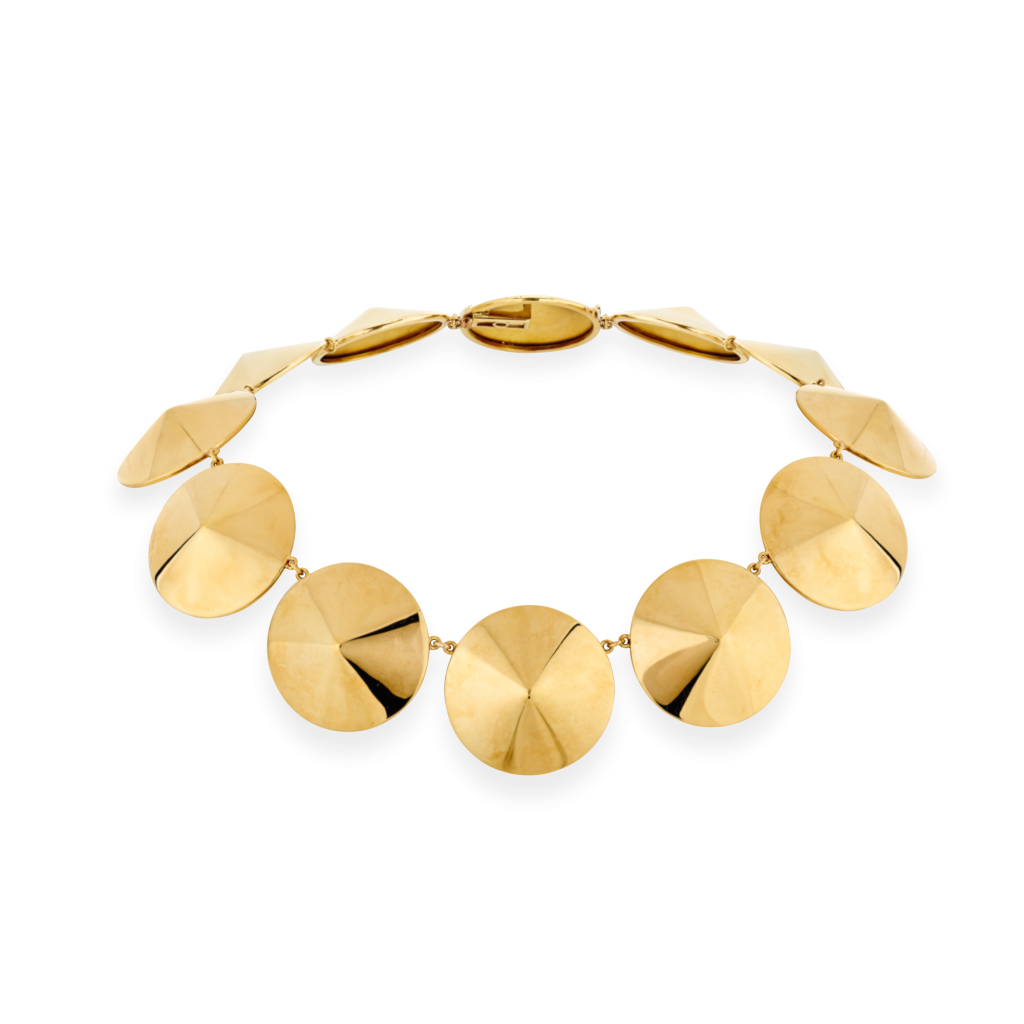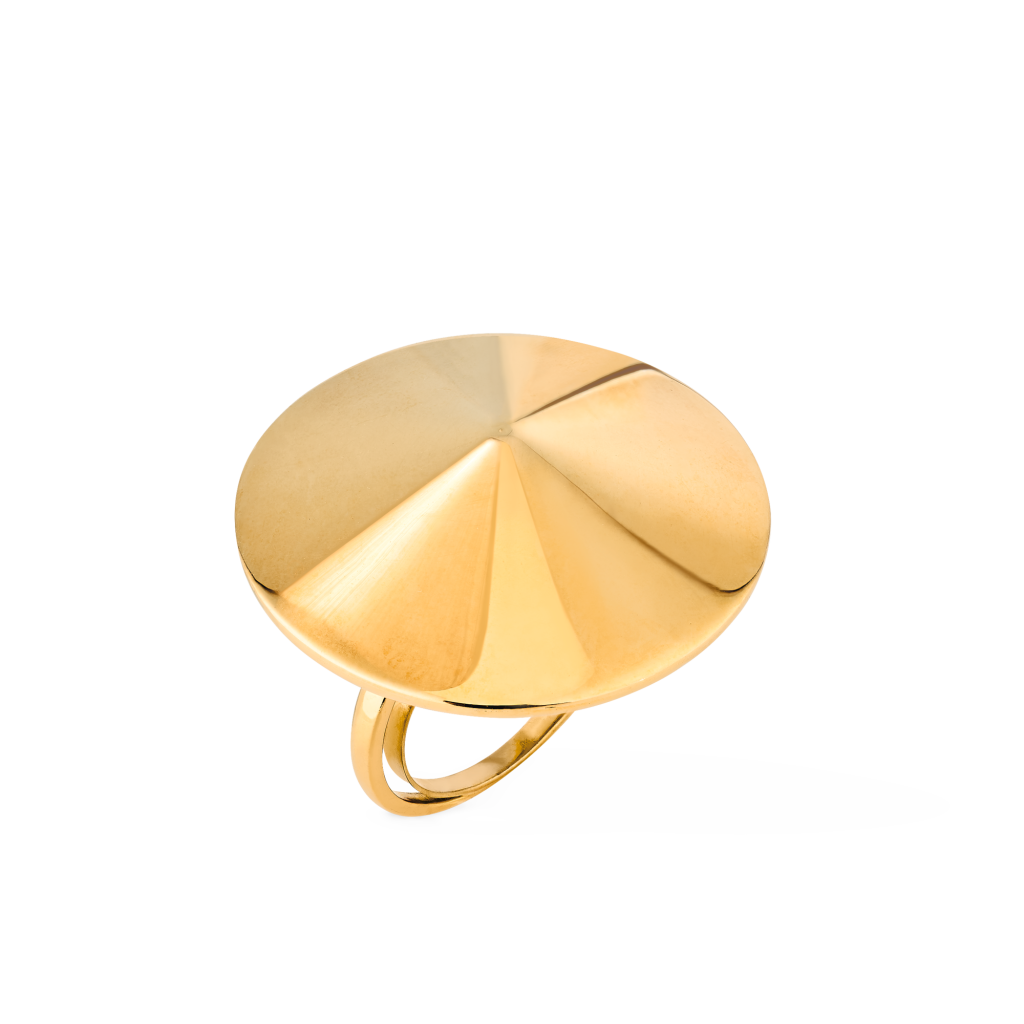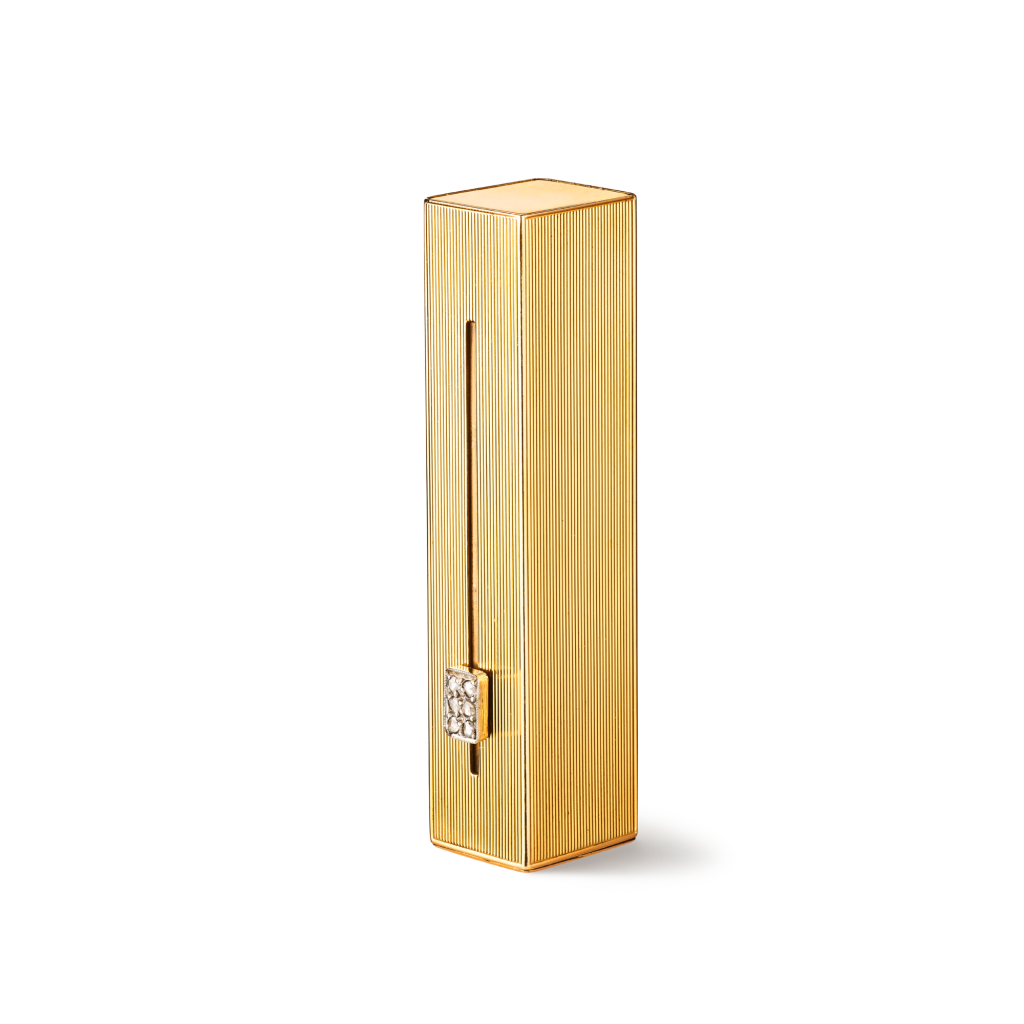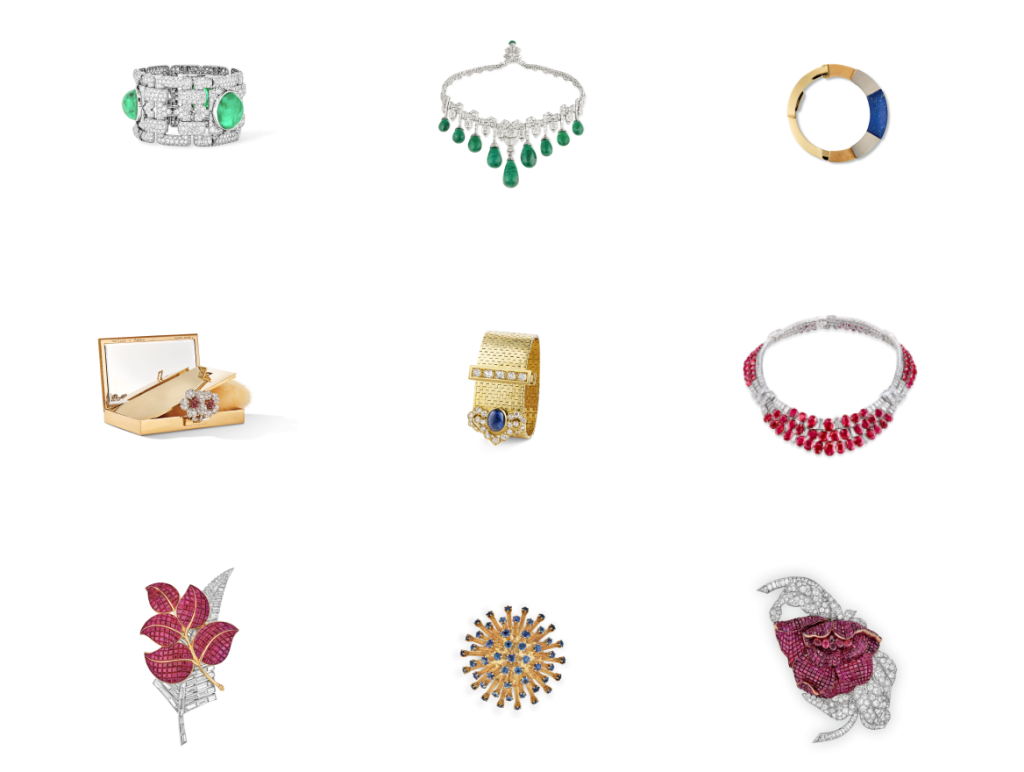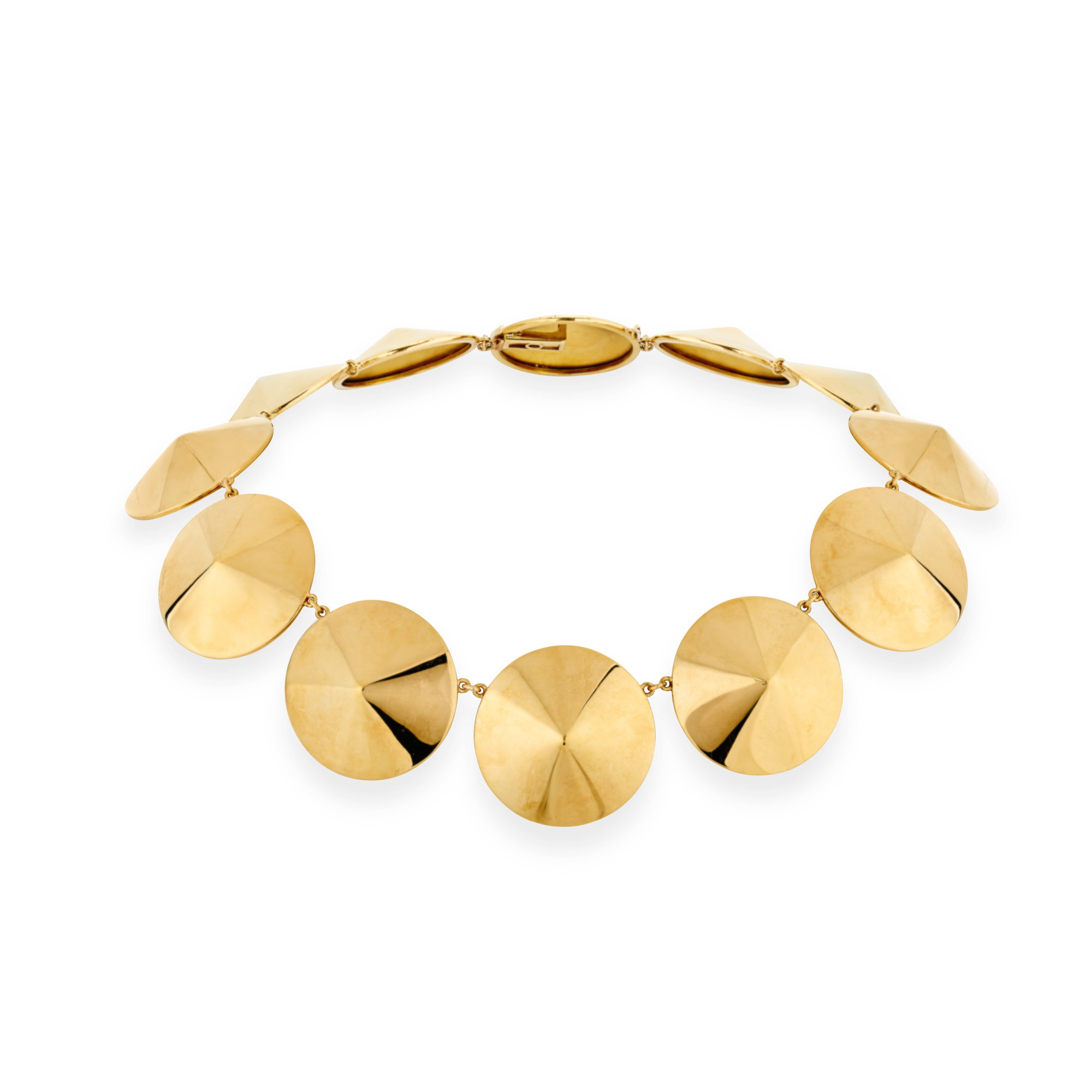
Necklace
Creation details
- Creation year 1931
- Material Gold
- Usage Necklace
- Dimensions 385 mm
This jewelry set, later named “Chinese Hat” set, is representative of the program of precious metal jewelry initiated by Van Cleef & Arpels for the Exposition coloniale internationale that took place in Paris in 1931.
The motif used throughout this ensemble resembles a conical hat, a widespread form of head covering at that time throughout South-East Asia and the Far East. The polished yellow gold recalls the pale yellow color of straw and dried leaves traditionally used for making these hats. The understatement of the motif itself, reduced to its most simple expression, as well as the prominence given here to metal, dispensing with all forms of precious stone ornamentation, make this set characteristic of the precious metal jewelry of the early 1930s.
Inspiration from new horizons
Westerners were intrigued by distant lands at that time, and this was reflected in the art world. All areas of creativity were concerned by it, from the decorative arts to architecture, as seen in the pavilions of the Exposition coloniale internationale in 1931, which included a “life-size [replica] of an Angkor temple.”1René Sim Lacaze, “Ce siècle avait un an”, [s.l] (1998): 75.
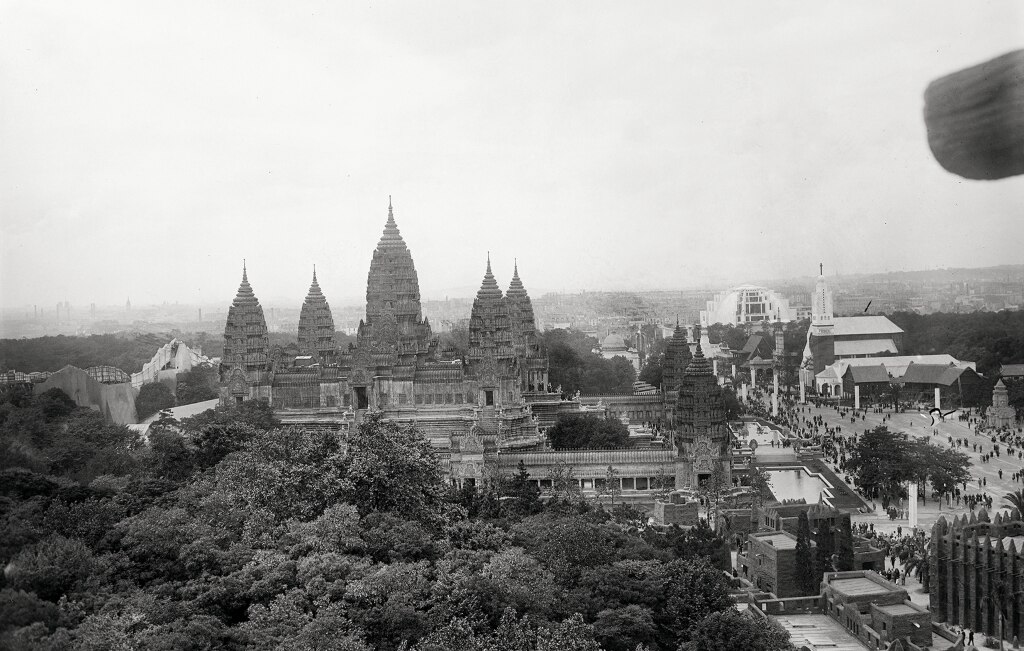
The representation of fauna at the Exposition coloniale
Decorators and designers of the 1930s made extensive use of materials and techniques from both the Orient and Africa. One such was Jean Dunand at the Exposition coloniale internationale in 1931, with his “colonial vestibule” displayed in the Palais permanent des colonies (now the Musée national de l’histoire de l’immigration), in which the visitor was immersed in a space with walls covered in laque arrachée panels featuring tigers crouching amid tall grass, and elephants. In this same pavilion, the rooms dedicated to the pictorial arts were brought to life by exotic fauna so dear to the painter Paul Jouve, with canvases “representing life-size elephants” and his famous “black panthers nonchalantly perched on a branch.”2René Sim Lacaze, “Ce siècle avait un an”, [s.l] (1998): 75.
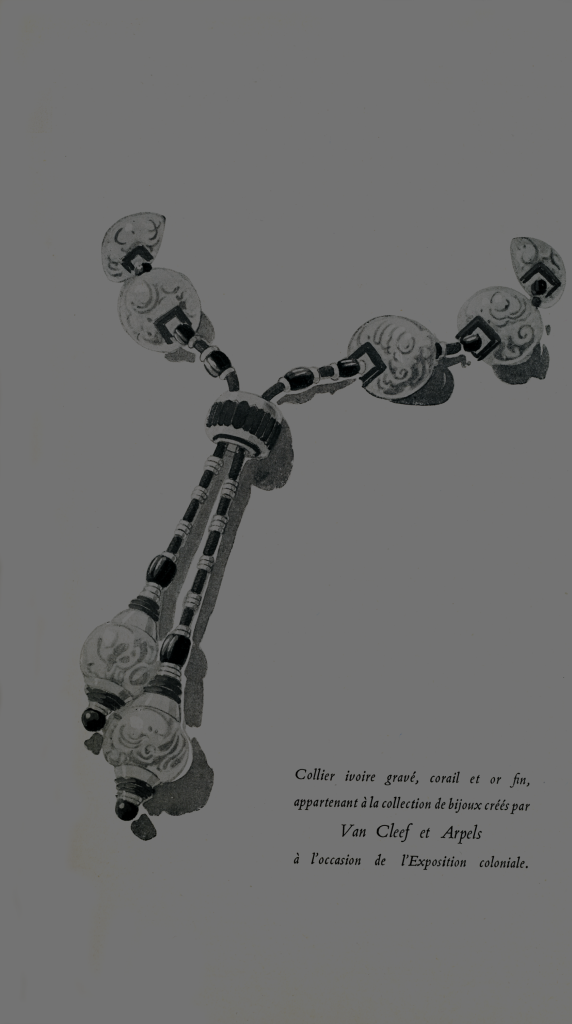
To go deeper
